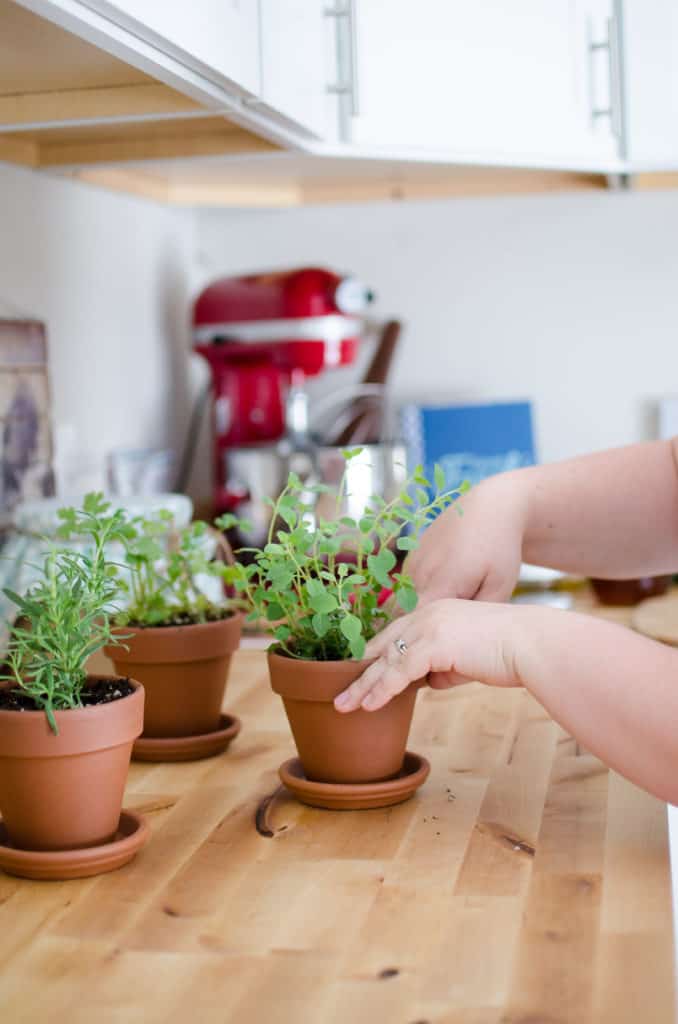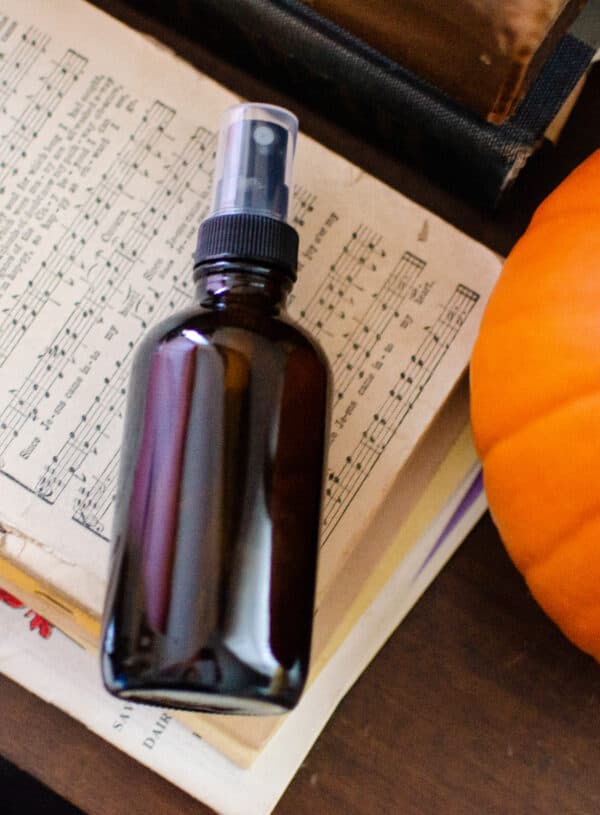When we first started our kitchen renovation, we knew the counter tops were an important part of the process. We thought we’d go with formica, but the more we researched butcher block, the more we fell in love with it. Butcher block counter tops are extremely forgiving, easy to maintain, and can easily be buffed or spot sanded down when the counter becomes compromised with scuffs, scratches, water rings, or burn marks.
In this blog post we’ll go over the process of curing the counter tops, and then we’ll walk through the monthly maintenance of them. I’ll show you some pros and cons of butcher block, and there’s even a video at the end showing you our counter tops!
The Pros and Cons of Butcher Block
I was terrified of our new counter tops when we got them. I thought for sure I’d ruin them within the first year . . . pretty sure my husband thought I would, too! We watched video after video on YouTube talking about the counter tops and how temperamental they can be, and while this can be true, we found that having butcher block wasn’t as hard as some made it out to be. There are, however, pros and cons—as with anything in life. So let’s go over a few of those!
The Butcher Block Pros
- They are easy to clean.
- If you get scratches, dents, or water rings; you can spot sand with some sand paper and simply recondition the counter.
- They are beautiful!
- They are completely natural.
- They are tough and resilient.
- Butcher block will last generations if taken care of properly.
- They are easily customized (with stains or wood types).
- Butcher block makes for a beautiful photography backdrop! This is important as an author and blogger, ya know?!
The Butcher Block Cons
- They get heat marks. You cannot set hot bowls, cups, or any hot dish onto the counter top. Anything that is boiling hot, even just boiling water in a cup for coffee or tea, can leave a heat ring on the counter. Typically it only leaves a ring on the top portion of the beeswax conditioner, but some go super deep into the wood. You can combat this by using trivets, or simply by placing a hand towel under hot items.
- You shouldn’t cut directly on it. I know that you’re not supposed to cut on any counter top, really, but I often did when I had my laminate counter tops. You can also cut on stainless steel, which is a nice option. While you can cut directly on the butcher block, you’ll ruin it. It allows bacteria and water to seep into the counter, and pretty soon your wood will start to deteriorate even if you condition it every month.
- You have to clean up the water on the counter. This could be an issue for some people around the sink, though it’s not for me. I always wipe my sink down either way. However, if water is left on the counter or around the sink, and it seeps through the protective wax barrier, it will cause your counter top to mold.
Getting Started with Butcher Block
Now that you’ve chosen your butcher block, it’s time to condition it well before putting it into your kitchen. It’s a simple process but can take some time to finish.
- Cut your butcher block to size for your counter tops. This includes the sink hole.
- Round the edges of the block a bit if you’d like to, otherwise just sand them down a little to get the sharp edges off.
- In an open area (either outside or in a garage, etc) make sure no water can get to your butcher block. Set the counter on saw horses or a table and get ready to start conditioning your butcher block. I chose to do ours on a sunny warm day, allowing the sun to hit the butcher block to warm it up and open the pores of the wood more.
- Using Howard’s Butcher Block Conditioner, put a thin layer of conditioner onto all sides and edges of the counter top and allow to set for 15 minutes. You can warm up the conditioner in the microwave or simply by setting it in a sunny spot. The heat helps the conditioner penetrate into the wood.
- After 15 minutes, put another layer of conditioner on. You’ll do this three times total. After the third time, wait 15 minutes and then buff the counter top with a clean rag, wiping off any excess conditioner.
- Allow the butcher block to set for a couple of hours before setting into your kitchen.
Once you’ve set your counter top in place, you’ll still need to condition it weekly for the first month.
Here’s what our schedule was:
- Condition everyday for the first week.
- Condition once a week for a month.
- Condition once a month moving forward.
Always wait 30 minutes before placing anything back on your counter top, as the wax and oils could seep into papers and books.
Monthly Butcher Block Maintenance
Now that your butcher block is installed and cured well, you only need to worry about monthly maintenance from this point going forward. Condition your counter tops once a month by cleaning them thoroughly (I like to use an enviro cloth), spot sanding where necessary, and then conditioning with the Howard’s Butcher Block conditioner. Allow the conditioner to set for 15 minutes, then buff clean with a new rag.
TIP: Use the same conditioner rag (not the buffing rag) over and over again and simply store it into a ziploc back with your conditioner until ready to use again. Do not wash the rag out, just leave it soaked in the excess conditioner.
And that’s it! While the initial tasks can seem daunting, I promise you that butcher block is extremely forgiving. You most likely will never have to pull your counter top off and completely refinish it. The best part is that these counters will literally last you for generations if you take care of it properly. The best thing to remember is not to set hot items directly on the counter (trivets are fine!), and to wipe up the water that gets on the counter top—that’s it!
I hope this blog post helps you decide whether or not you want to add butcher block to your kitchen or other living space, and I hope that it shows you just how beautiful and simple it really is to incorporate into your farmhouse home!
Watch the Farmhouse Butcher Block Video!




















I love butcher block, I wish I had gotten it instead of the Corian. It’s an even bigger folly in that it’s blue. Dark blue. What was I thinking?? Just to update some information, it is a common misconception that wood counter tops harbor mold and bacteria. I would say that abused wood counter tops have the potential to harbor mold and bacteria. Several studies have shown that wood actually has anti-bacterial properties…so yeah! Just another reason to love it!